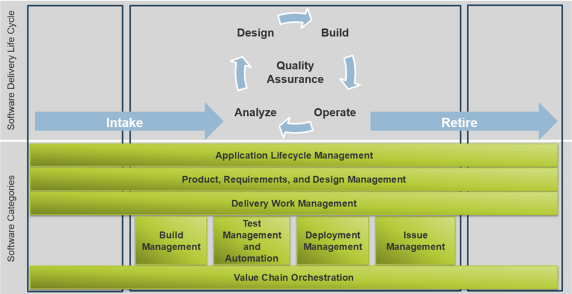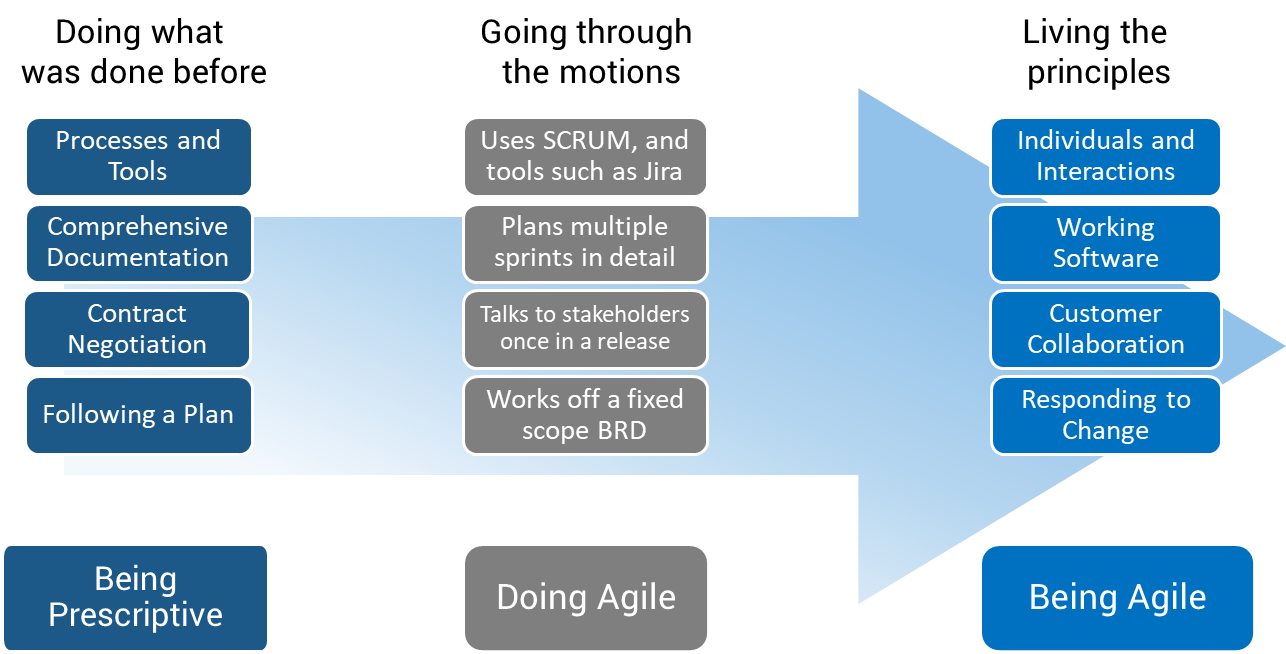Mindset Shift and Tooling
Receive free IIBA updates and exclusive content!
Business Analysis Capability Fit in Scaling Agile Part 4: Based on IIBA quarterly Corporate Leader Webinar with Info-Tech’s Allison Straker
During the April 16th IIBA Corporate Leader webinar on scaling agile, we were asked about an organization’s use of multiple tools: Jira, TFS, and potentially ServiceNow – as they [corporate attendees] wanted to understand the impact on Business Analysts. These tools support the Work Management necessary for their teams SDLC.
Our research shows that a well-integrated tool chain can facilitate, but not replace, the communication necessary within a team and organization.

Professionals responsible for business analysis want clear and consistent communication, and so we cannot let tools become a hindrance. If tools are not aligned throughout the organization, that does not have to prevent the communication of good epics, user stories, and acceptance criteria. Business Analysts must ensure that requirements are clearly communicated to the team(s) they work with.
However, as organizations look to scale their agile implementation, the use of a well-integrated tool chain becomes key to maintaining communications across the enterprise.

Don’t Just Do Agile
Many organizations pilot Agile with just the development team. While this is a great first step, remember that Agile isn’t about silos or a sub team doing their part. In order to achieve success, it is critical to have business and technology work side-by-side, without silos, across the organization.
Info-Tech’s approach to Agile encourages teams to ensure that they aren’t just going through the motions of Agile; instead they need to embrace its true principles. While the ceremonies, tools and practices are important, it is more important to focus on individuals and interactions, customer collaboration and responding to change.

Source: Implement Agile Practices That Work, Info-Tech Research Group
What Can I Do?
| Do your research. Examine your existing processes carefully to identify opportunities to bring in further agile thinking. | |
|
Be Decisive. Choose which Agile practice(s) that are right to help scale within your organization. You may not be the decision-maker; however, you have a role to communicate and to support the organization in choosing methods that will help them improve. |
While important factors to consider in choosing your scaled Agile framework include the size of the organization, your processes, and whether you are highly regulated, you should not ignore the organizations culture, communication styles, and the types of products your organization creates.
Corporate Leader Webinar is one of the benefits of IIBA’s Corporate Program.
Corporate Leader Webinar is one of the benefits of IIBA’s Corporate Program. Corporate Leaders help select topics that would be beneficial to Business Analysis leaders and their communities. Each quarter features a new topic and speaker. To hear more about IIBA’s Corporate Program and receive the full excerpt, please email corporatemembership@iiba.org.
Tell Me More!
To receive the full excerpt now and learn how IIBA’s Global Corporate Program can help your organization get better results from your Agile Analysis initiatives complete the form below.
Reach out to a program manager now.

In case you missed it:
Part 1: Why Scaling Agile is Essential for Your Organization
Part 2: Business Analysis Has a Role in Your Agile Transformation
Part 3: Is Agile … Limiting for Business Analysts?
References:
Info-Tech has done extensive research on Agile and Requirements. Review some of our articles and blueprints (research) below, and reach out to our team to find out how you can access more information:
Agile Skills Don’t Revolve Around Ceremonies and Procedures: They’re About Traits and Values.
Agile Doesn’t Mean No Requirements
BizDevOps Starts with Great Requirements
Implement Agile Practices That Work
Transition to Product Delivery
Build a Better Backlog
